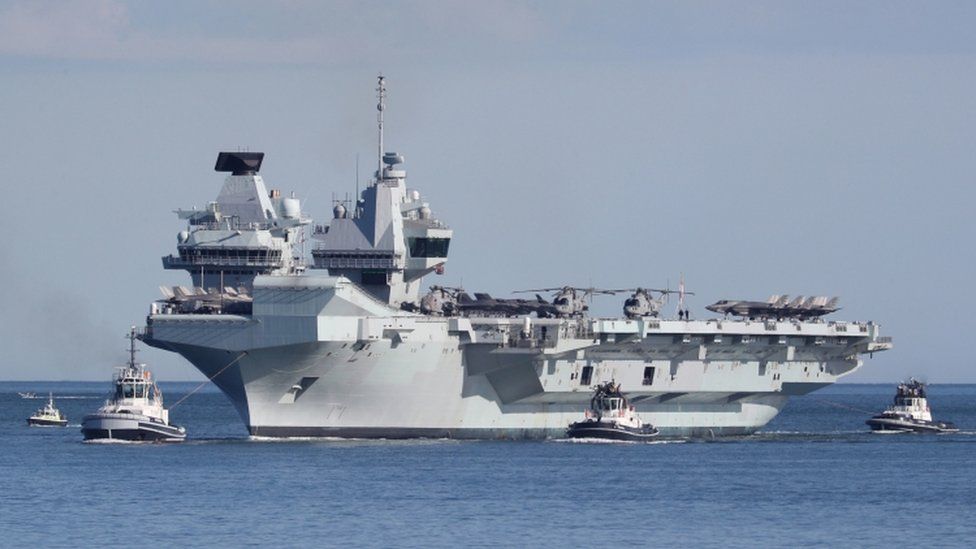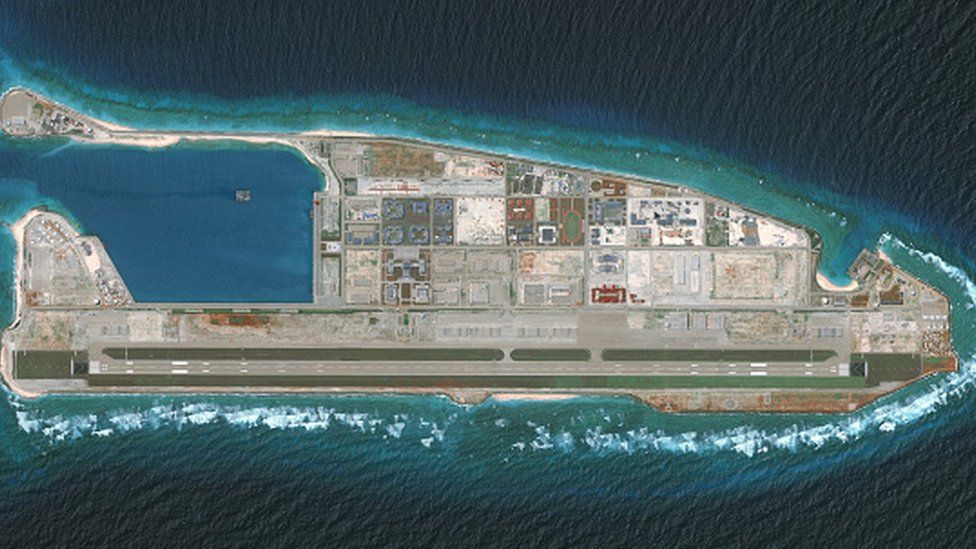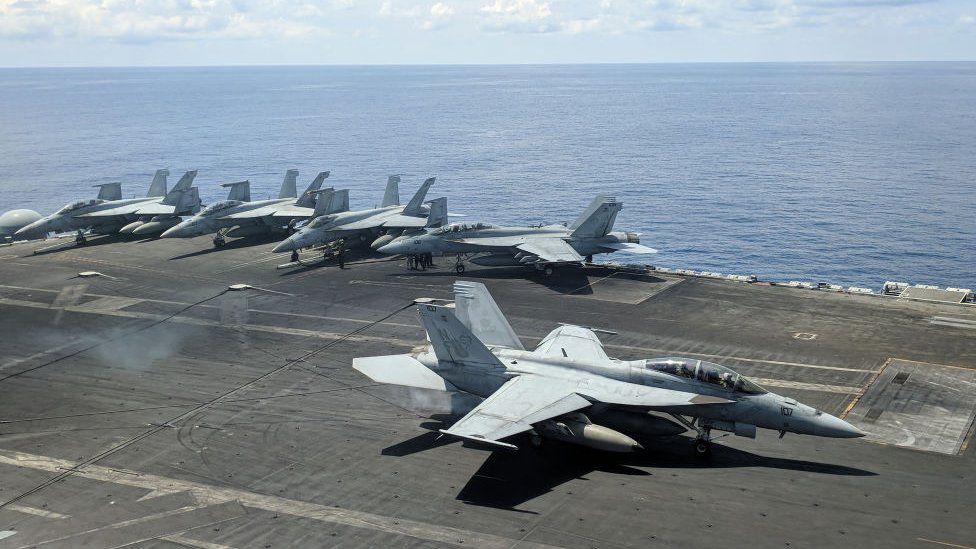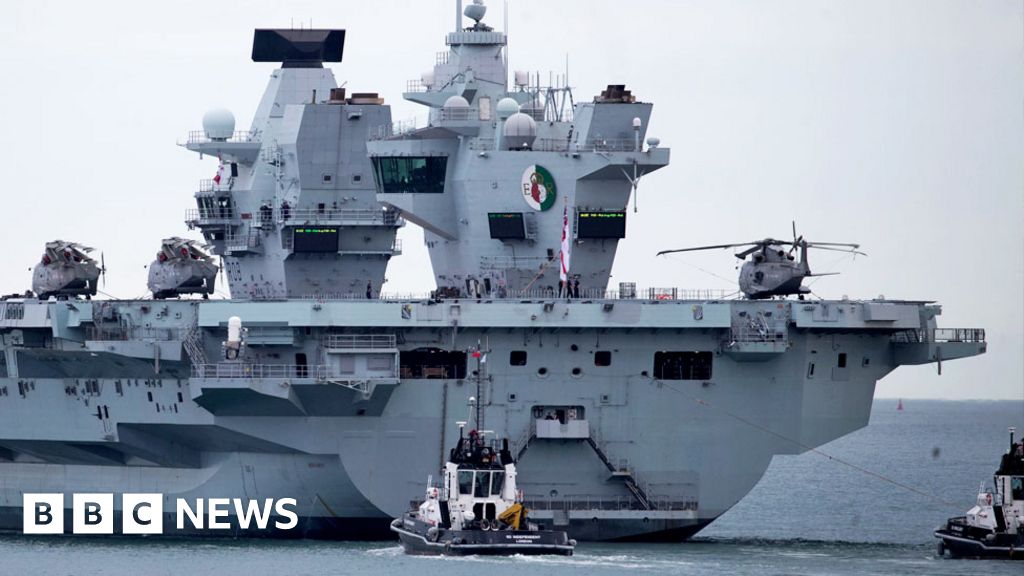
The HMS Queen Elizabeth is part of the UK Carrier Strike Group sailing through the South China Sea
China has warned the UK's Carrier Strike Group, led by the aircraft carrier HMS Queen Elizabeth not to carry out any "improper acts" as it enters the contested South China Sea.
'The People's Liberation Army Navy is at a high state of combat readiness' says the pro-government Global Times, seen as a mouthpiece for the ruling Chinese Communist Party (CCP).
China has been closely monitoring the progress eastward of the Carrier Strike Group, which is currently sailing through the South China Sea en route to Japan, while accusing Britain of "still living in its colonial days".
The Royal Navy has been carrying out exercises with the Singaporean navy and Britain's Defence Secretary Ben Wallace has made no secret of the intention to conduct a so-called "Freedom of Navigation" exercise through the South China Sea.
Contrary to a 2016 international court ruling, China claims much of that sea as its own and has been busy building artificial reefs and runways, some of them close to the territorial waters of neighbouring states.
Both US and Royal Navy warships have recently challenged China's claims to sovereignty in the South China Sea by purposely sailing through it.

China has been building artificial islands in the South China Sea
So the question now is: will we see a close encounter similar to the one that took place in the Black Sea in June when the UK's HMS Defender, a Type 45 destroyer, was buzzed by Russian warplanes as it passed close to the disputed Crimean peninsula?
"China is not looking for a direct confrontation with a major US ally in the South China Sea," says Veerle Nouwens, a senior research fellow at the Royal United Services Insitute (Rusi), a London think tank. "But it will certainly make its intentions clear."
If the UK conducts freedom of navigation exercises through that sea, then Ms Nouwens believes we are likely to see a repeat of what happened when HMS Albion sailed through it in 2018. It was closely shadowed by a Chinese warship from just 200m away, warning it to leave, while Chinese aircraft flew low over the British vessel.

The US has sailed through the South China Sea
China has been holding extensive military exercises in the region this week, practising beach assaults in a move that has worried some analysts it is preparing to eventually invade Taiwan.
The PLA Navy will use the UK's Carrier Strike Group's presence in the South China Sea "as a chance for practice and for studying the UK's latest warships up close", says the Global Times.
It quotes a spokesman for the Chinese embassy in London as saying: "The threat to freedom of navigation could only come from the one who deploys a carrier strike group to the South China Sea half a world away and flexes its naval muscles to heighten the military tension in that region."
But while the arrival of the Carrier Strike Group in the region has provoked some angry words from Beijing, Rusi's Research Fellow for Naval Power, Sidharth Kaushal, points out that when it comes to naval standoffs, "China's actions have been calibrated as being well below the threshold of anything that would start a shooting war".
The deployment of HMS Queen Elizabeth and its escort ships to East Asia is seen as part of the British government's bid to play a more prominent role in global security, as set out in the government's recent Integrated Review.
France, too, as well as other European nations, has been turning its attentions towards the South China Sea as China's growing military and economic power appears unstoppable.
China has recently embarked on a major uplift in its nuclear ballistic missile arsenal, building new launch silos in the remote Xinjiang region. It has also been developing Hypersonic Glide Vehicles, high-velocity missiles that can reach speeds of up to eight times the speed of sound and which have been dubbed "carrier killers".

China warns UK as carrier strike group approaches
A fleet of British ships is currently sailing through the South China Sea en route to Japan.

